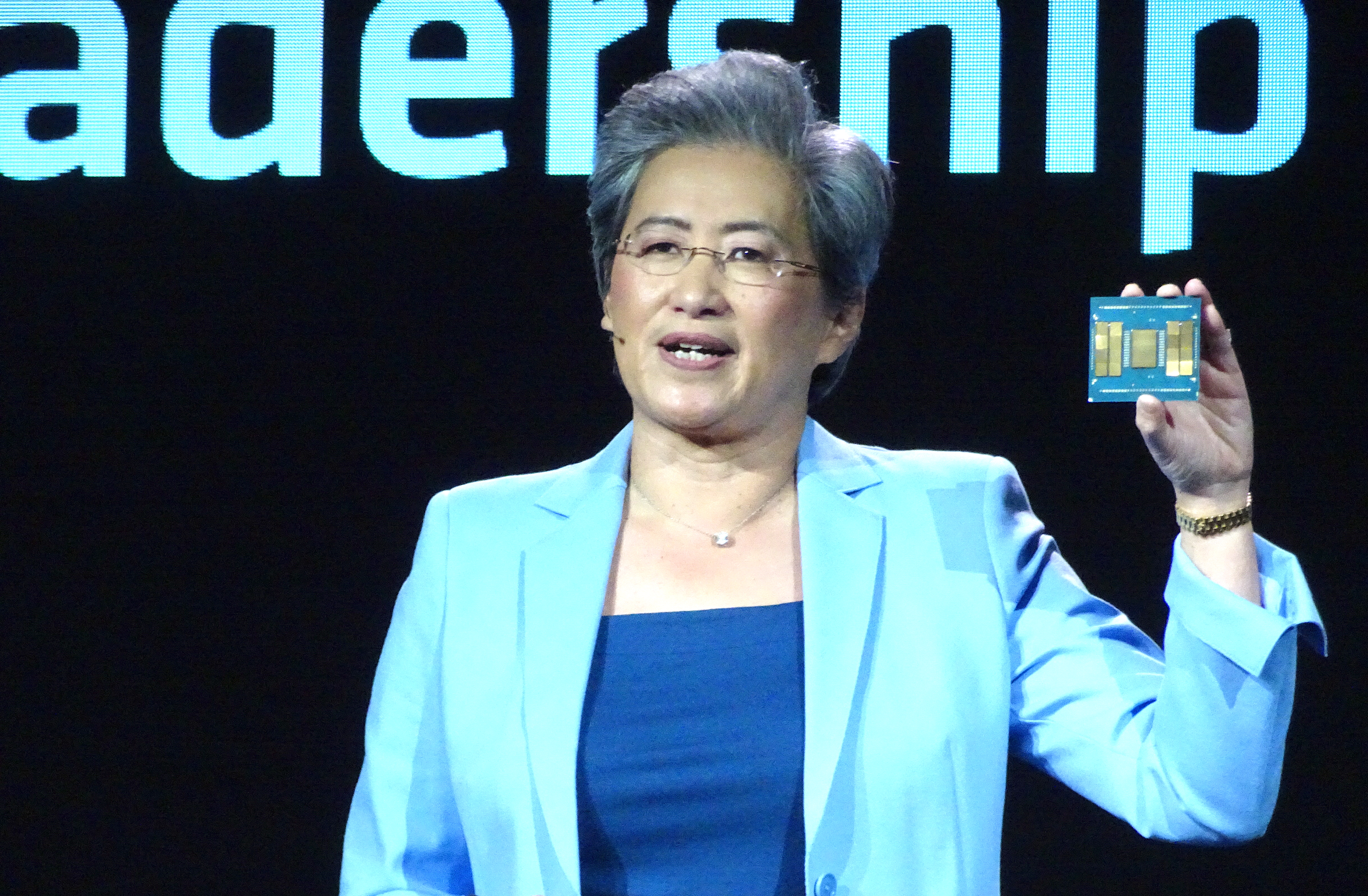 INFRA
INFRA
 INFRA
INFRA
 INFRA
INFRA
Advanced Micro Devices Inc. disappointed investors with a tepid sales forecast today, and its stock was heading south during the extended trading session.
The company’s stock was down more than 7% after hours, despite solid third-quarter earnings that met expectations and revenue that came in ahead of them.
AMD reported earnings before certain costs such as stock compensation of 92 cents per share, in-line with Wall Street’s forecast. Revenue for the period rose 18% from a year earlier, to $6.82 billion, above the Street’s consensus estimate of $6.71 billion.
The company said its data center business managed to double its revenue for the second quarter in a row, but its fourth-quarter guidance fell just shy of the analyst’s consensus. For the fourth quarter, AMD said it’s targeting sales of $7.5 billion, give or take $300 million, below the Street’s forecast of $7.54 billion. That would represent a decline of 22% from the fourth quarter of fiscal 2023.
Despite that, the company is becoming more profitable. AMD reported net income of $771 million at the end of the third quarter, up from a profit of just $299 million one year earlier.
Digging into the numbers, it was AMD’s data center segment that once again showed the most impressive numbers, with sales more than doubling from a year earlier to $3.5 billion. On a conference call, AMD Chair and Chief Executive Lisa Su (pictured) said the data center growth was driven by strong sales of the company’s Instinct-branded graphics processing units, which provide an alternative to Nvidia Corp.’s GPUs for companies looking to run artificial intelligence workloads.
All told, data center revenue grew by 122% from a year earlier, and Su said there will be more to come as the company is still seeing lots of demand from cloud infrastructure providers and other enterprises looking to build out their AI infrastructure.
AMD also sells central processing units for personal computers, laptops and servers, and that segment of its business, the client division, saw sales rise 23% to $1.9 billion. In the conference call, Su said AMD’s CPUs power a number of new, high-end laptops that have been branded as “Copilot+” devices because they’ve been customized to run advanced AI models embedded with Microsoft Corp.’s Windows operating system.
Because the data center segment contributed more revenue to the company’s total, AMD was able to expand its gross margin to 54%, ahead of the Street’s expectations.
AMD also operates a gaming sector that makes chips for video games consoles and graphics cards for PCs, but it had a disappointing quarter, with sales falling 68% from a year earlier. According to Su, this was the result of a decline in “semi-custom revenue,” which pertains to chip sales for consoles such as the PlayStation 5 and Microsoft Xbox.
As for AMD’s embedded business, which sells low-power chips for industrial and automotive applications, revenue there declined 25%, to $927 million.
Third Bridge analyst Lucas Keh said the after-hours stock decline suggests investors were hoping for the data center segment to drive even more growth than what materialized, though they may also be concerned about the weakness in AMD’s client and embedded segments.
Although AMD’s stock is headed in the wrong direction today, it’s still up more than 20% in the year to date. However, the company may be concerned that rivals such as Nvidia and Broadcom Inc. have enjoyed much greater gains over the same period, benefiting from enterprises’ insatiable demand for AI chips.
AMD might have hoped for better, since it’s the world’s second-biggest supplier of GPUs after Nvidia, but it still has reason to be optimistic about its longer-term prospects. During the quarter, it announced the next generation of its Instinct AI accelerator, the MI325X chip, plus a new networking platform based on the AMD Pensando Salina data processing unit. According to the company, the MI325X accelerator provides 1.3 times greater performance than Nvidia’s most powerful alternative, the H200 GPU, with 1.8 times greater capacity and 1.3 times more bandwidth.
The chipmaker has been tight-lipped about its expectations for the MI325X accelerator. But it cites third-party data that forecasts the AI GPU market to grow to more than $500 billion by 2028, which suggests there’s enormous room for growth if AMD can take more market share away from Nvidia.
Currently, the company only commands a small fraction of that market. During the conference call, Jean Hu, AMD’s executive vice president, treasurer and chief financial officer, said the company expects to generate $5 billion in AI chip sales this year, up from $4.5 billion in 2023.
“Customer and partner interest in the MI325X is high,” Su said when asked about its prospects. “Production shipments are planned to start this quarter.”
Keh said GPU sales will continue to be the main driver of AMD’s growth going forward, and although it remains the “clear number two” in the AI accelerator market, it can benefit from Nvidia’s delays in bringing its next-generation Blackwell GPUs to market.
“AMD has a good opportunity to gain incremental share from Nvidia with its 325x and 350 Instinct products amidst the current Blackwell delay concerns,” he said.
THANK YOU